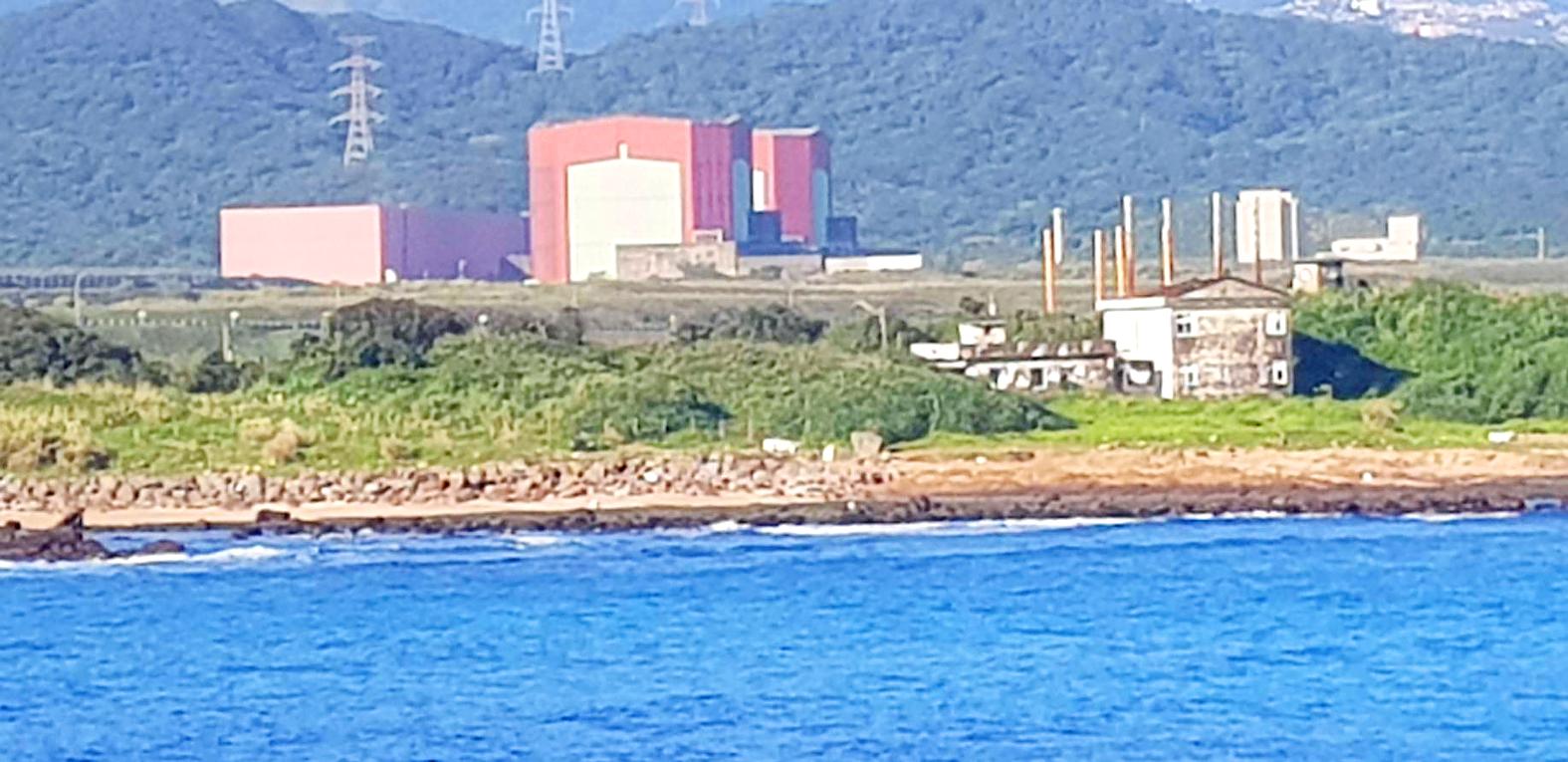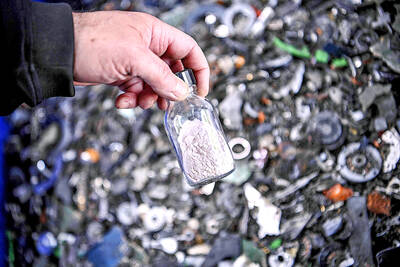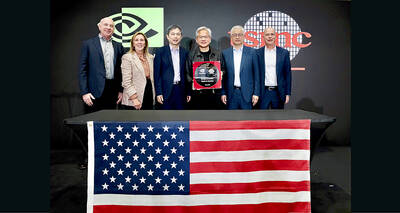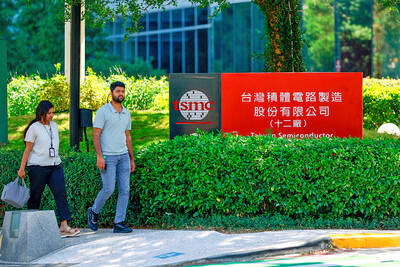The No. 1 reactor at the Guosheng Nuclear Power Plant in New Taipei City’s Wanli District (萬里) is to be shut down today after producing power for 40 years, Taiwan Power Co (Taipower, 台電) said yesterday.
The generator’s 40-year operating permit expires at the end of this year, but as the facility’s spent fuel storage is full, the 985 megawatt reactor would be shut down earlier in preparation for a major overhaul of the facility, the utility said.
Due to the shortage in storage space, Taipower reduced the plant’s power generation capacity by about 20 percent since late February.

Photo: Yu Chao-fu, Taipei Times
The overhaul is expected to take six months and decommissioning of the No. 1 reactor would begin thereafter, Taipower said.
The plant’s second reactor is scheduled to operate until March 2023 when its operating permit expires, it said.
The administration of President Tsai Ing-wen (蔡英文) is committed to phasing out nuclear power generation by 2025 and replacing it with renewable sources of energy. It aims at an energy mix of 20 percent energy production from renewable sources, 50 percent from liquefied natural gas and 30 percent from coal.
Nuclear power accounted for about 11.2 percent of the nation’s energy production last year, down from a peak of 16 to 19 percent.
The Ministry of Economic Affairs said that other energy sources, including natural gas, and solar and hydro power, would in the short term make up for the energy produced by the No. 1 reactor at the Guosheng plant.
Taipower first proposed the reactor’s decommissioning three years ago, gaining approval from the Atomic Energy Commission in October last year.
The plan included the construction of a dry storage facility for used fuel.
However, the establishment of the facility might be delayed by a dispute between the New Taipei City Government and Taipower.
New Taipei City has yet to issue a permit for the storage of the reactor’s fuel rods, as it is opposed to a permanent spent fuel storage facility within its jurisdiction.

RECYCLE: Taiwan would aid manufacturers in refining rare earths from discarded appliances, which would fit the nation’s circular economy goals, minister Kung said Taiwan would work with the US and Japan on a proposed cooperation initiative in response to Beijing’s newly announced rare earth export curbs, Minister of Economic Affairs Kung Ming-hsin (龔明鑫) said yesterday. China last week announced new restrictions requiring companies to obtain export licenses if their products contain more than 0.1 percent of Chinese-origin rare earths by value. US Secretary of the Treasury Scott Bessent on Wednesday responded by saying that Beijing was “unreliable” in its rare earths exports, adding that the US would “neither be commanded, nor controlled” by China, several media outlets reported. Japanese Minister of Finance Katsunobu Kato yesterday also

Jensen Huang (黃仁勳), founder and CEO of US-based artificial intelligence chip designer Nvidia Corp and Taiwan Semiconductor Manufacturing Co (TSMC, 台積電) on Friday celebrated the first Nvidia Blackwell wafer produced on US soil. Huang visited TSMC’s advanced wafer fab in the US state of Arizona and joined the Taiwanese chipmaker’s executives to witness the efforts to “build the infrastructure that powers the world’s AI factories, right here in America,” Nvidia said in a statement. At the event, Huang joined Y.L. Wang (王英郎), vice president of operations at TSMC, in signing their names on the Blackwell wafer to

‘DRAMATIC AND POSITIVE’: AI growth would be better than it previously forecast and would stay robust even if the Chinese market became inaccessible for customers, it said Taiwan Semiconductor Manufacturing Co (TSMC, 台積電) yesterday raised its full-year revenue growth outlook after posting record profit for last quarter, despite growing market concern about an artificial intelligence (AI) bubble. The company said it expects revenue to expand about 35 percent year-on-year, driven mainly by faster-than-expected demand for leading-edge chips for AI applications. The world’s biggest contract chipmaker in July projected that revenue this year would expand about 30 percent in US dollar terms. The company also slightly hiked its capital expenditure for this year to US$40 billion to US$42 billion, compared with US$38 billion to US$42 billion it set previously. “AI demand actually

RARE EARTHS: The call between the US Treasury Secretary and his Chinese counterpart came as Washington sought to rally G7 partners in response to China’s export controls China and the US on Saturday agreed to conduct another round of trade negotiations in the coming week, as the world’s two biggest economies seek to avoid another damaging tit-for-tat tariff battle. Beijing last week announced sweeping controls on the critical rare earths industry, prompting US President Donald Trump to threaten 100 percent tariffs on imports from China in retaliation. Trump had also threatened to cancel his expected meeting with Chinese President Xi Jinping (習近平) in South Korea later this month on the sidelines of the APEC summit. In the latest indication of efforts to resolve their dispute, Chinese state media reported that